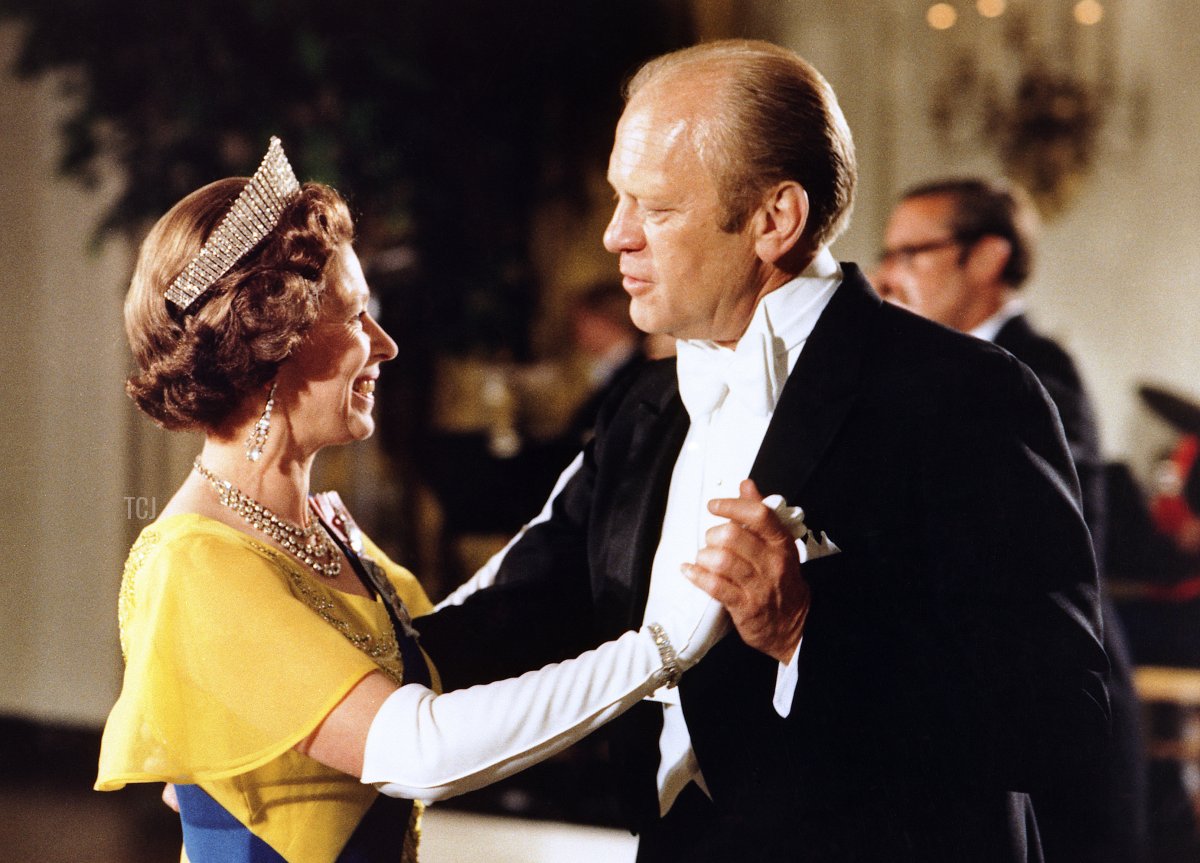
Our American royal jewelry series continues today with another of Queen Elizabeth II’s visits to the White House—this time to celebrate a major national anniversary.
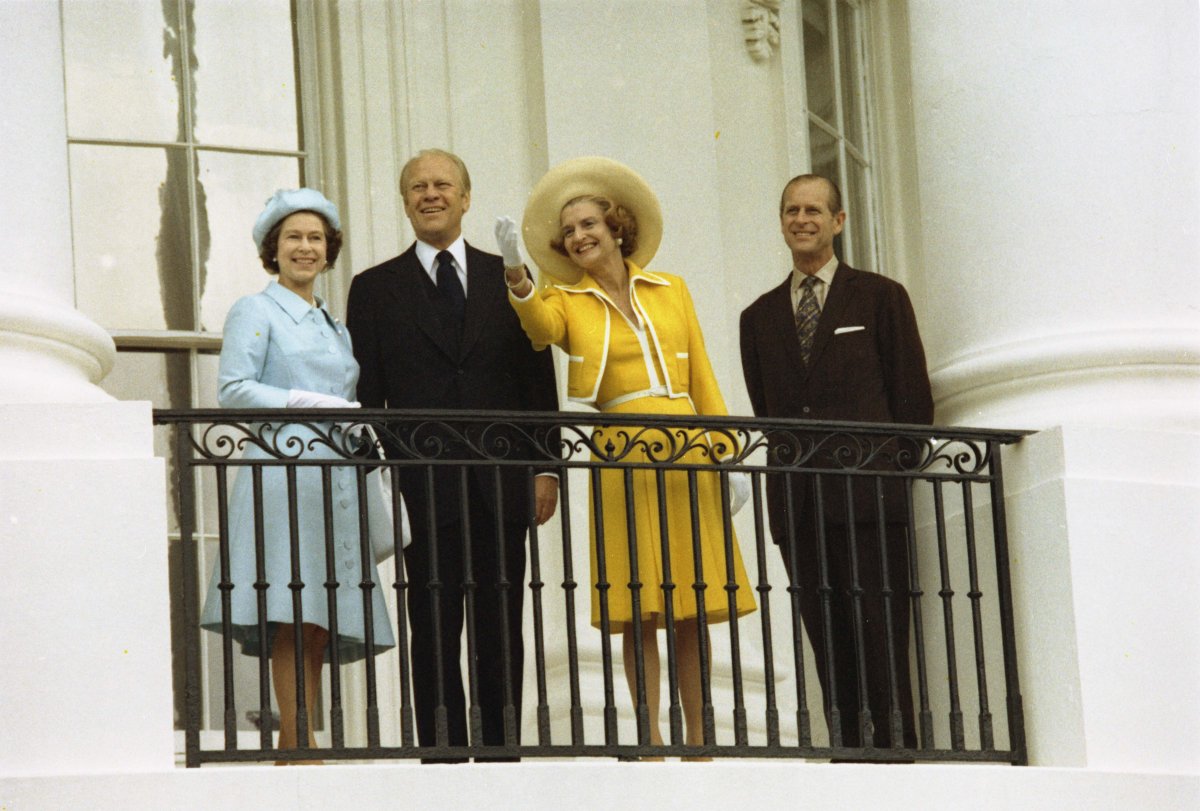
Queen Elizabeth II and Prince Philip, Duke of Edinburgh arrived at the White House for a six-day state visit on July 7, 1976. The timing of the visit was quite special: it took place just three days after the United States celebrated its bicentennial, and the 200th anniversary celebrations were still in full swing around the country. The Queen (wearing the Cambridge Pearl Pendant Brooch) and the Duke posed with President Gerald R. Ford and First Lady Betty Ford on the Truman Balcony during the official welcome ceremony.
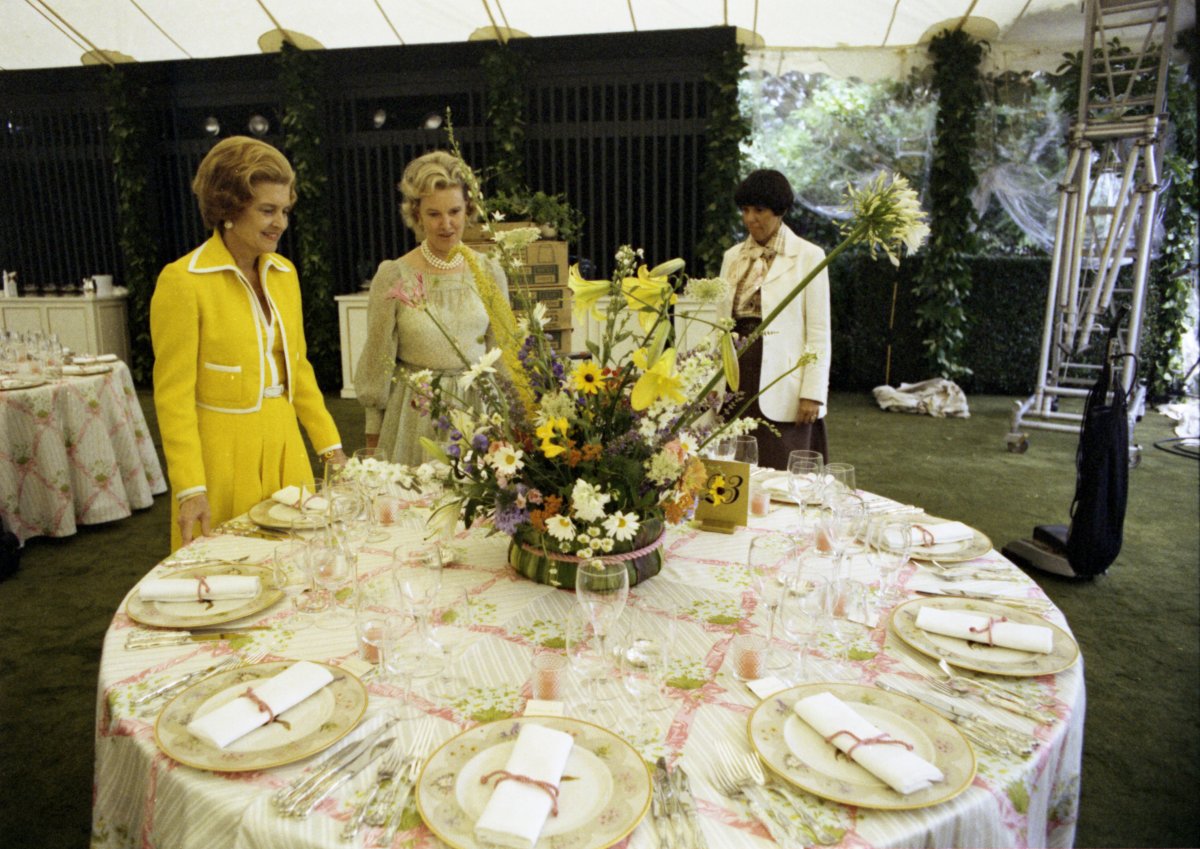
After lunch inside the White House, Elizabeth and Philip headed to Arlington National Cemetery to pay their respects. Meanwhile, Betty Ford and her team shifted into high gear to prepare for that night’s special state dinner. Instead of hosting the dinner inside the White House, they’d decided to stage the event under a tent in the Rose Garden. Indeed, numerous state dinners were held under that same tent during the final year of the Ford presidency—eleven of them in total (!). The Fords were famous for their entertaining, hosting a remarkable 33 state dinners during his brief presidency.
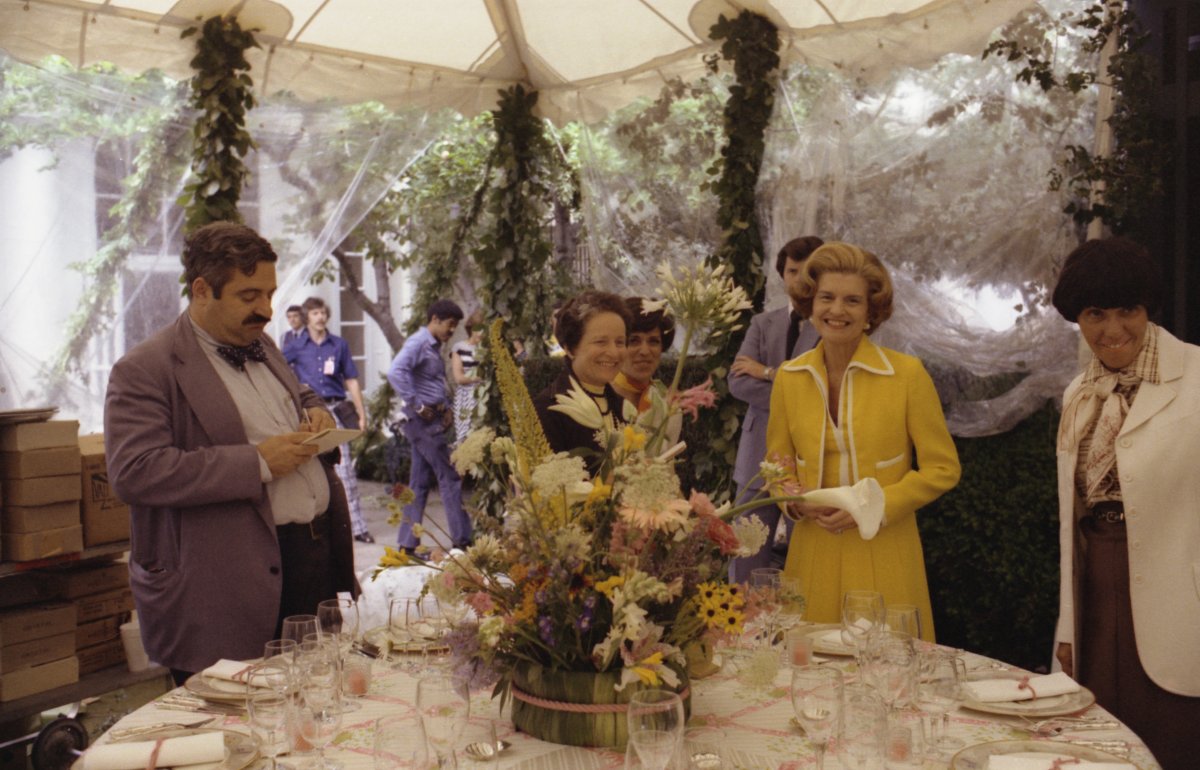
The 100-foot canopy stretched over the lawn was decorated with garlands of flowers and greenery, and elaborate floral displays were also placed on each of the round dining tables. The floral-patterned Johnson china was used to set the tables. Even the specially-commissioned Scalamandré linens for the evening had a floral theme, and gardeners busily tended to pink Queen Elizabeth roses as part of the outdoor decorations.
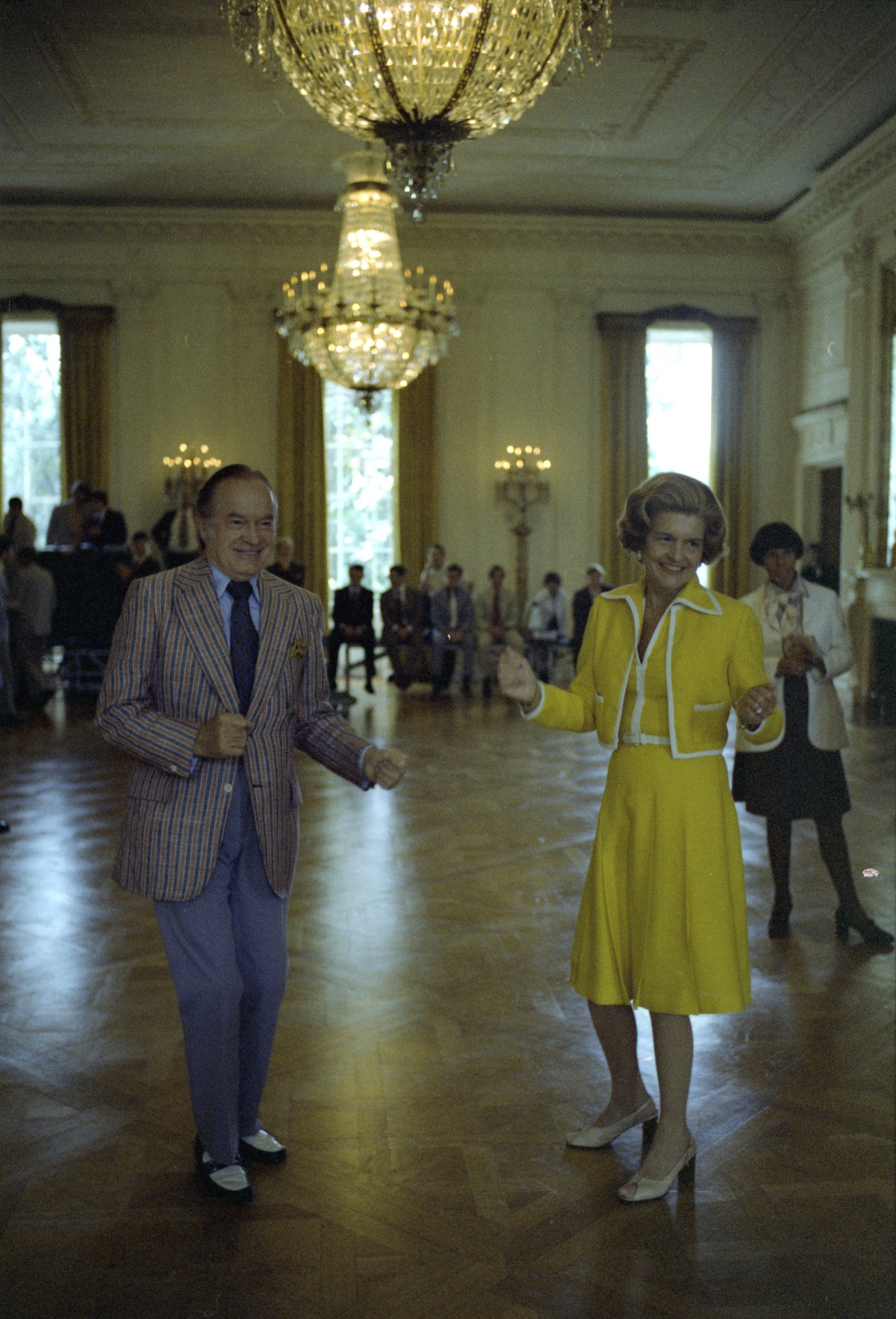
While the dinner was held outside, the after-dinner entertainment and dancing was staged inside the White House. Here, Betty boogies with Bob Hope, one of the evening’s entertainers, during rehearsals for that night’s performances.
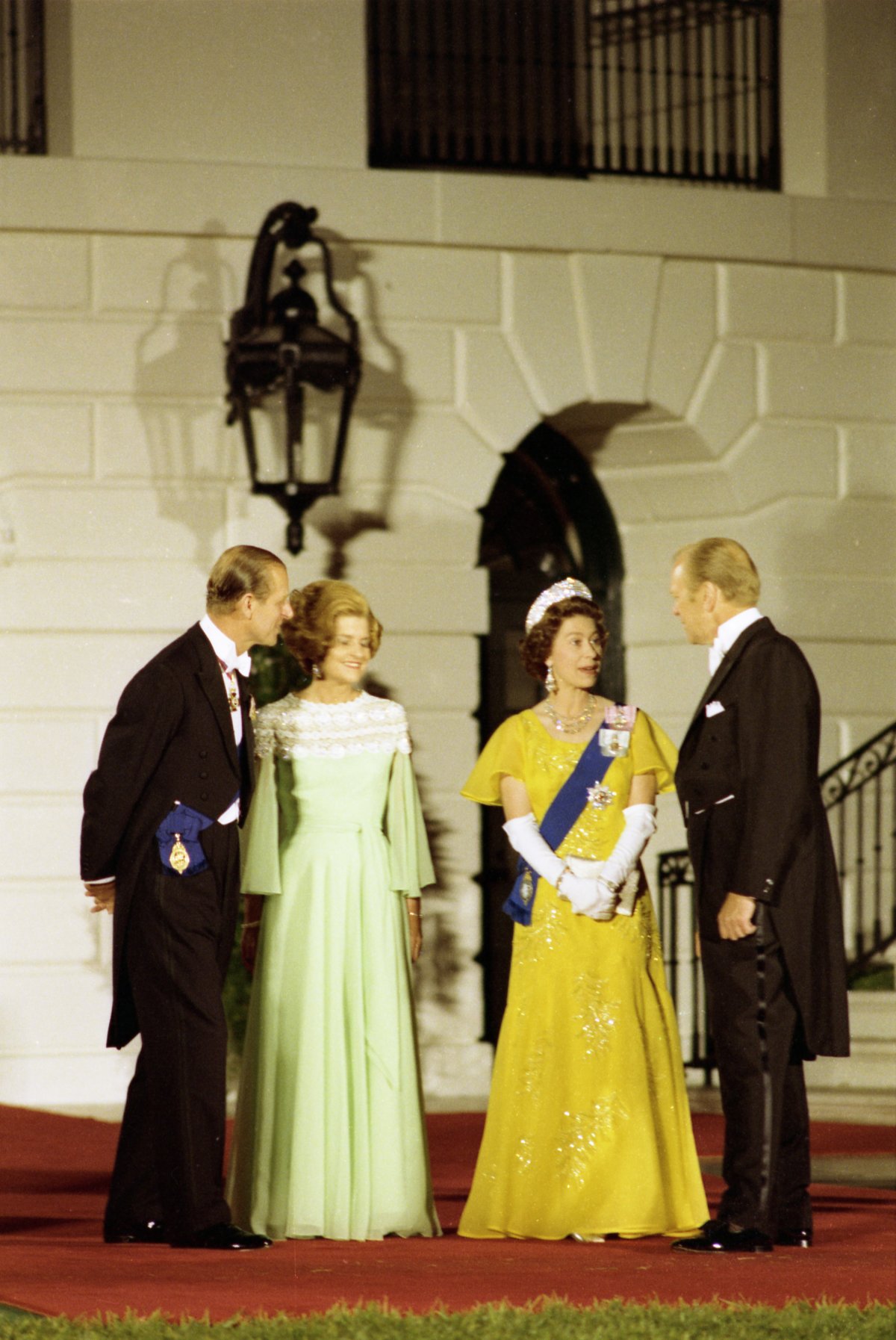
Much to everyone’s dismay, the summer heat brought rain to Washington in the early evening of July 7. The state dinner had to be postponed for an hour so that the weather could clear up. But eventually, the royal and presidential couples were able to take their places on the South Lawn outside the gleaming White House (sporting a fresh new bicentennial coat of paint) to greet the rest of the 224 guests.
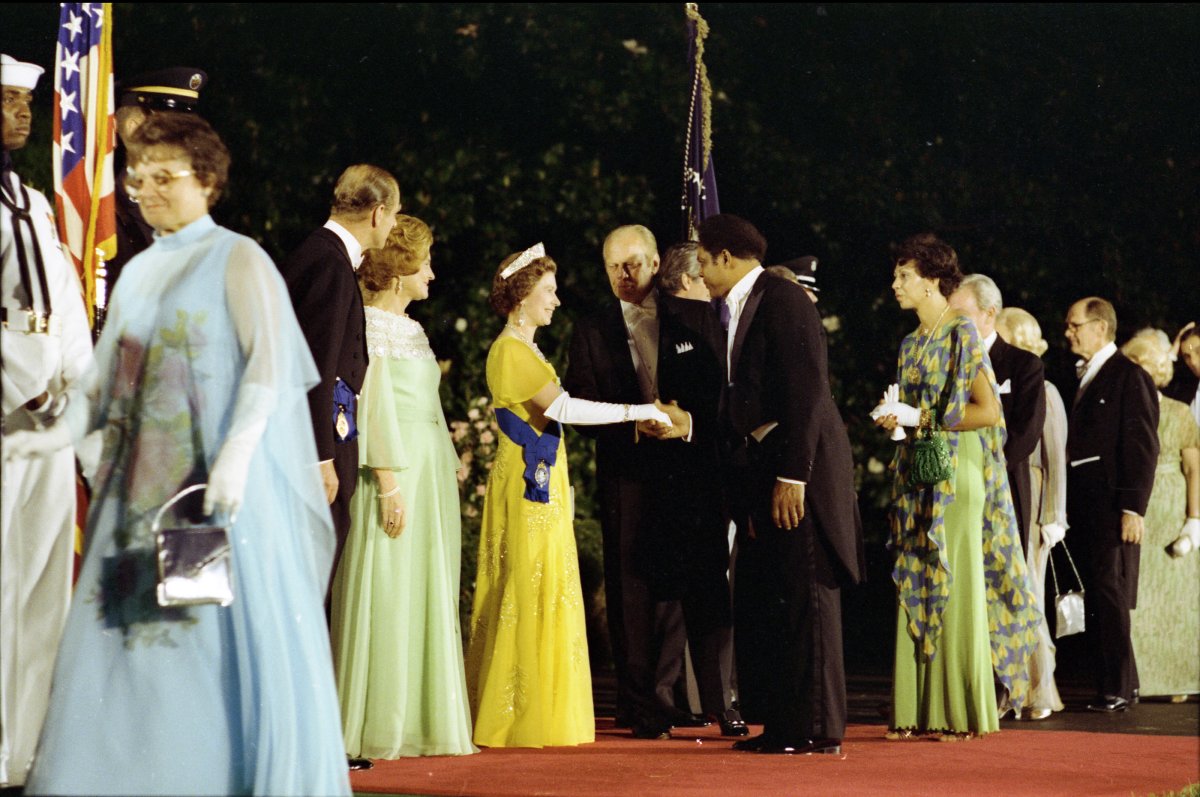
Numerous dignitaries, celebrities, and notables were included on the guest list, and they filed past the Queen, the Duke, the President, and the First Lady on a red carpet as they arrived for the dinner. The receiving line was shown live on television on PBS, and the intense floodlights for the cameras brightly illuminated the scene.
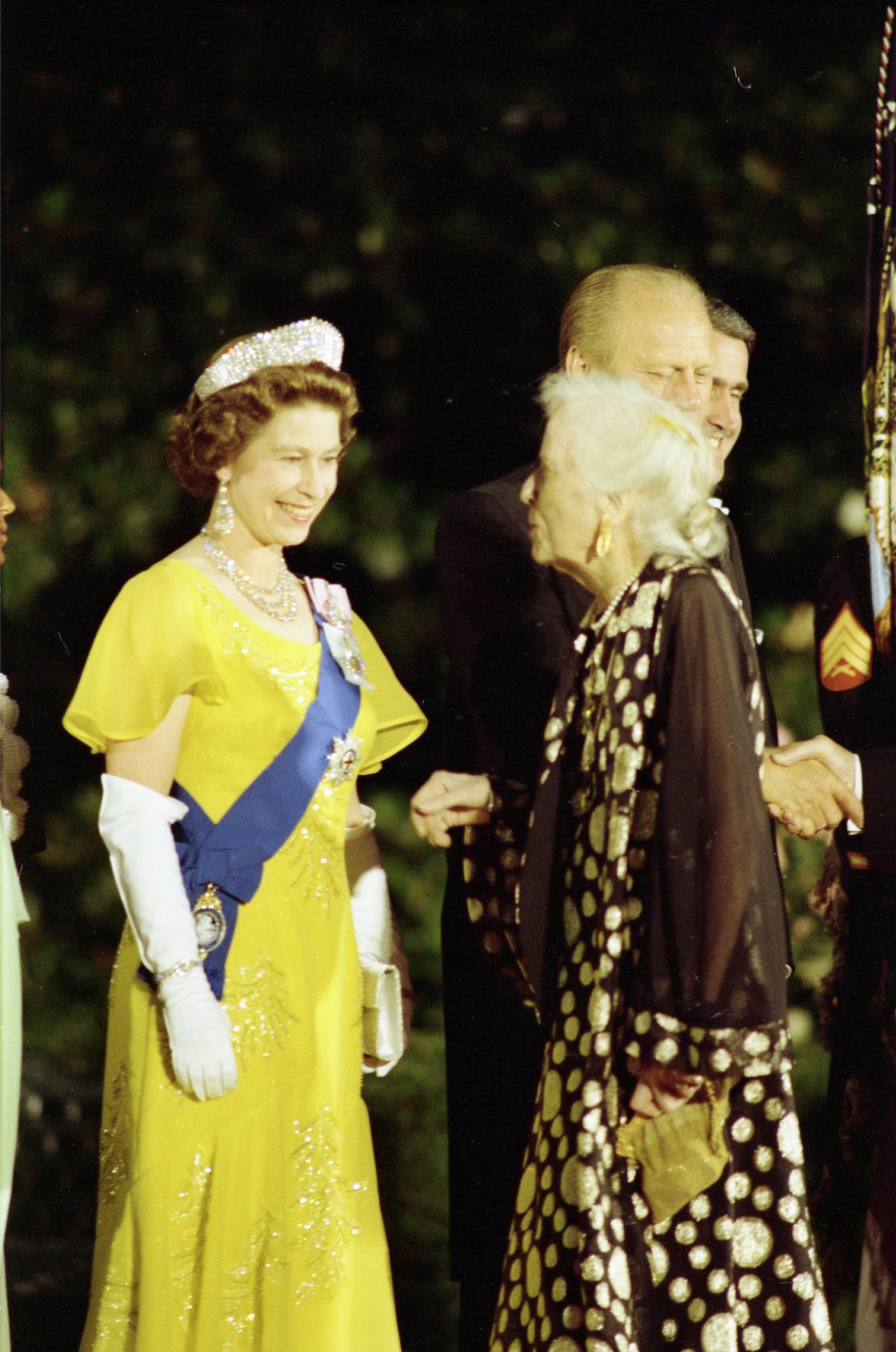
Here, the Queen chats with 92-year-old Alice Roosevelt Longworth, daughter of President Theodore Roosevelt. (She’d seen a thing or two at the White House over the years.) Another former resident of the building, Lady Bird Johnson, slipped in quietly, avoiding the receiving line altogether.
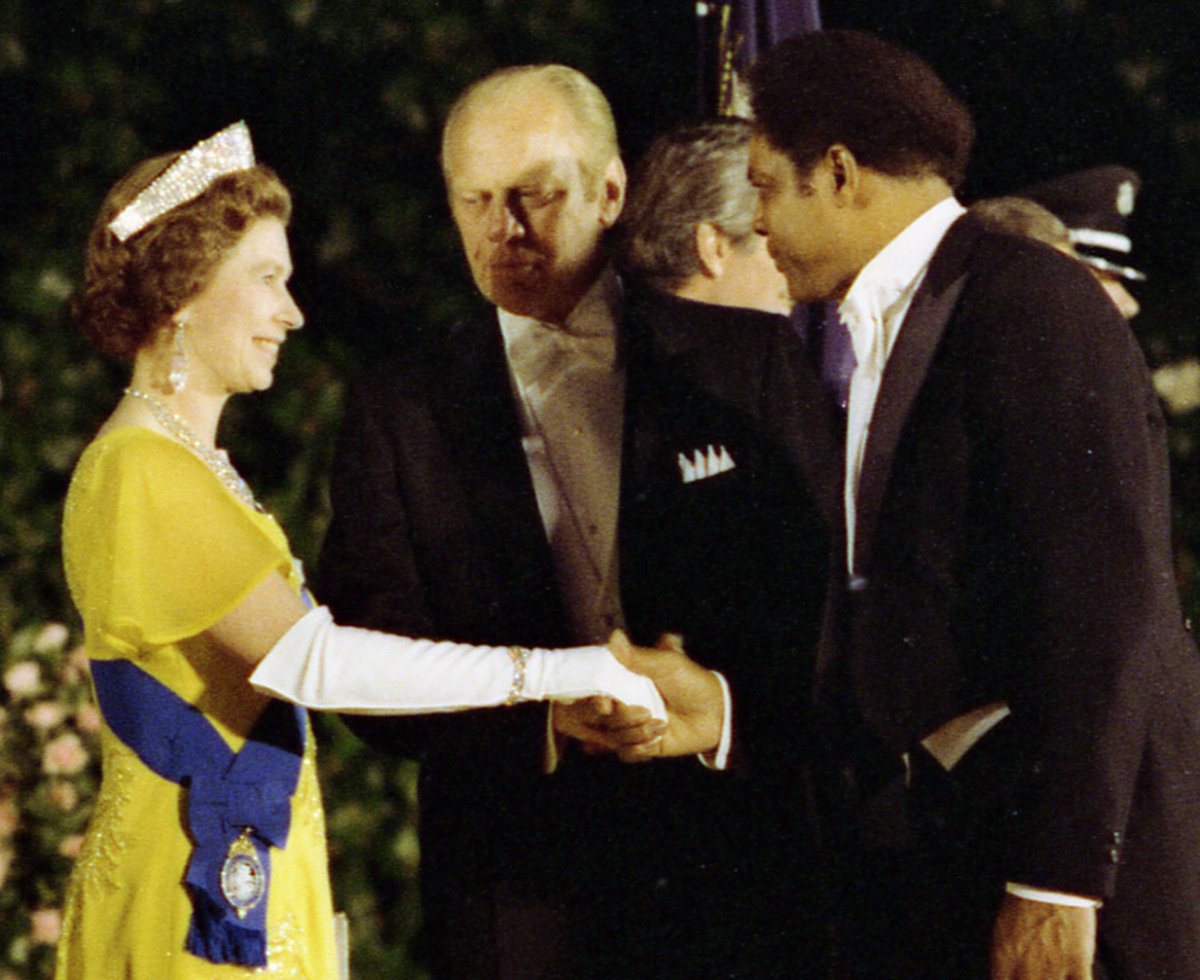
And here, President Ford introduces the Queen to baseball star Willie Mays, by then retired after his remarkable playing career. The guest list also included numerous actors, entertainers, and musicians, from Ella Fitzgerald to Cary Grant. Journalist Barbara Walters was on the guest list, and so was one of the Queen’s more unlikely friends, the evangelist Billy Graham.
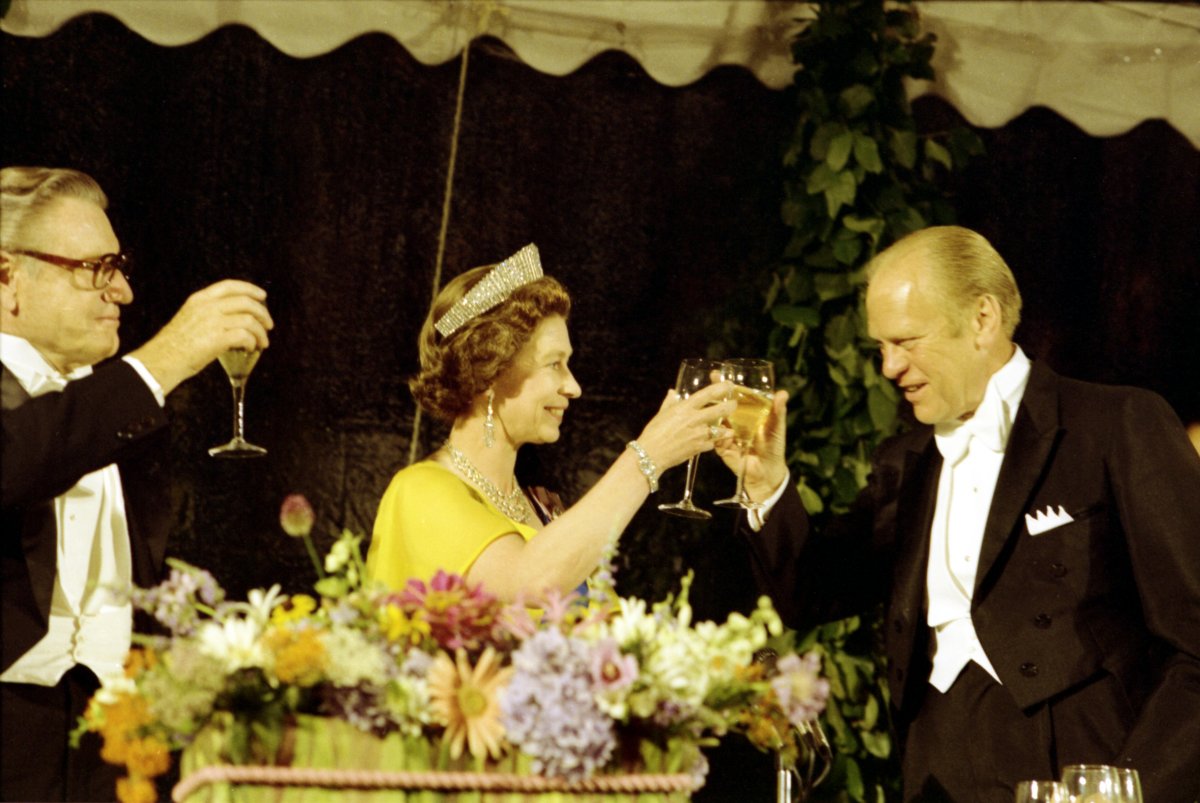
During the dinner, the Queen and the President both delivered remarks and raised a toast to the enduring friendship between the two nations—a reminder of how far they’d come since the United States declared its independence from Britain 200 years earlier. The Queen noted, “Both our peoples believe in the world of the individual and the family, in freedom of religion and expression, in the right to change the government by the ballot box rather than the gun, perhaps the best definition of democracy. That is why, time and time again, in the testing days of war and the constructive years of peace, we have stood together on the things that matter.”
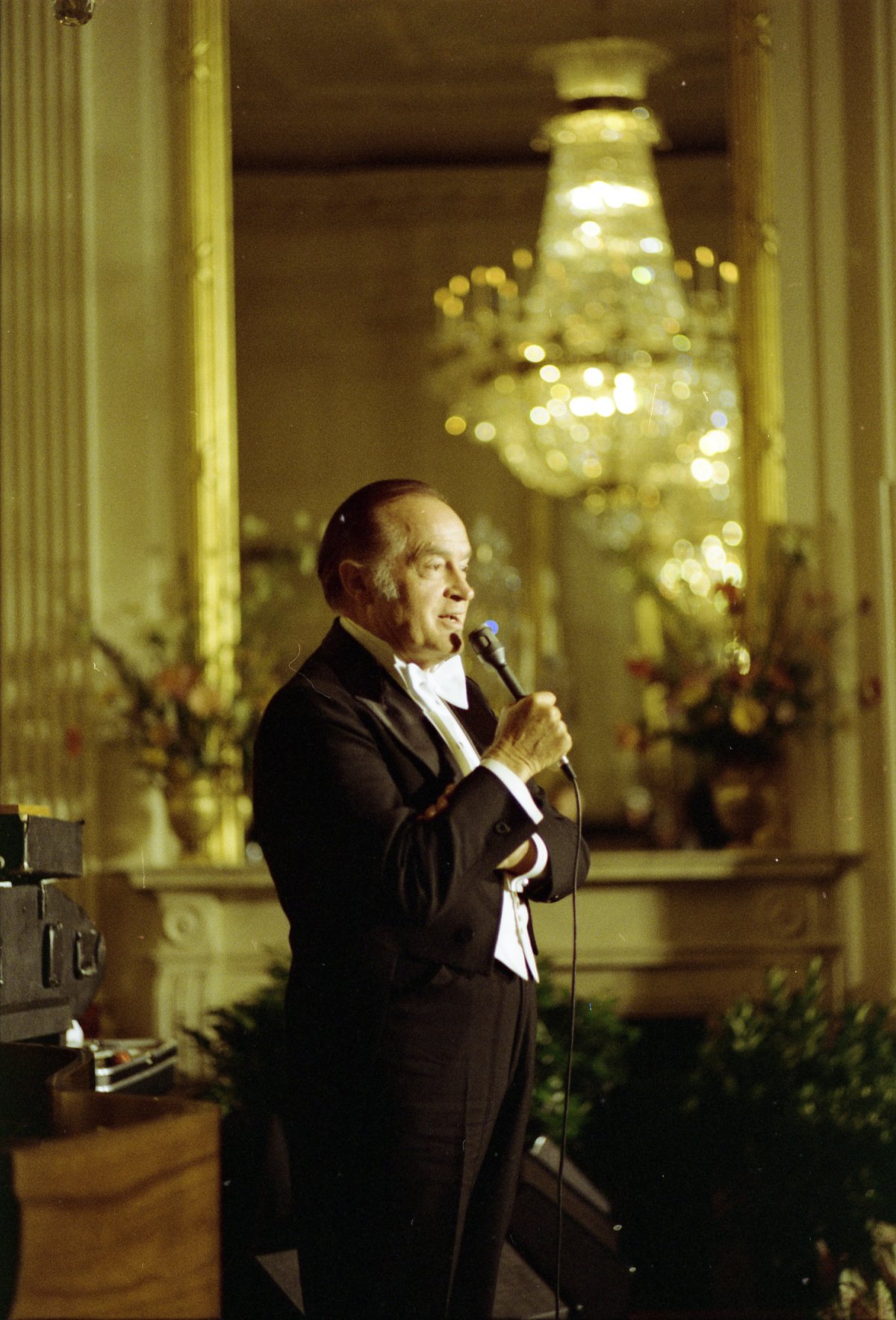
After a candlelight dinner of lobster and veal, the guests headed inside to the East Room, where Bob Hope—born Leslie Townes Hope in Eltham near Greenwich—was waiting to put on a show. The UPI reporter wrote that Hope had Prince Philip “practically rolling in the aisle” when he joked that “priests are complaining [that] their flock no longer comes to confession,” going instead straight to the Washington Post. (A little timely Watergate humor.)
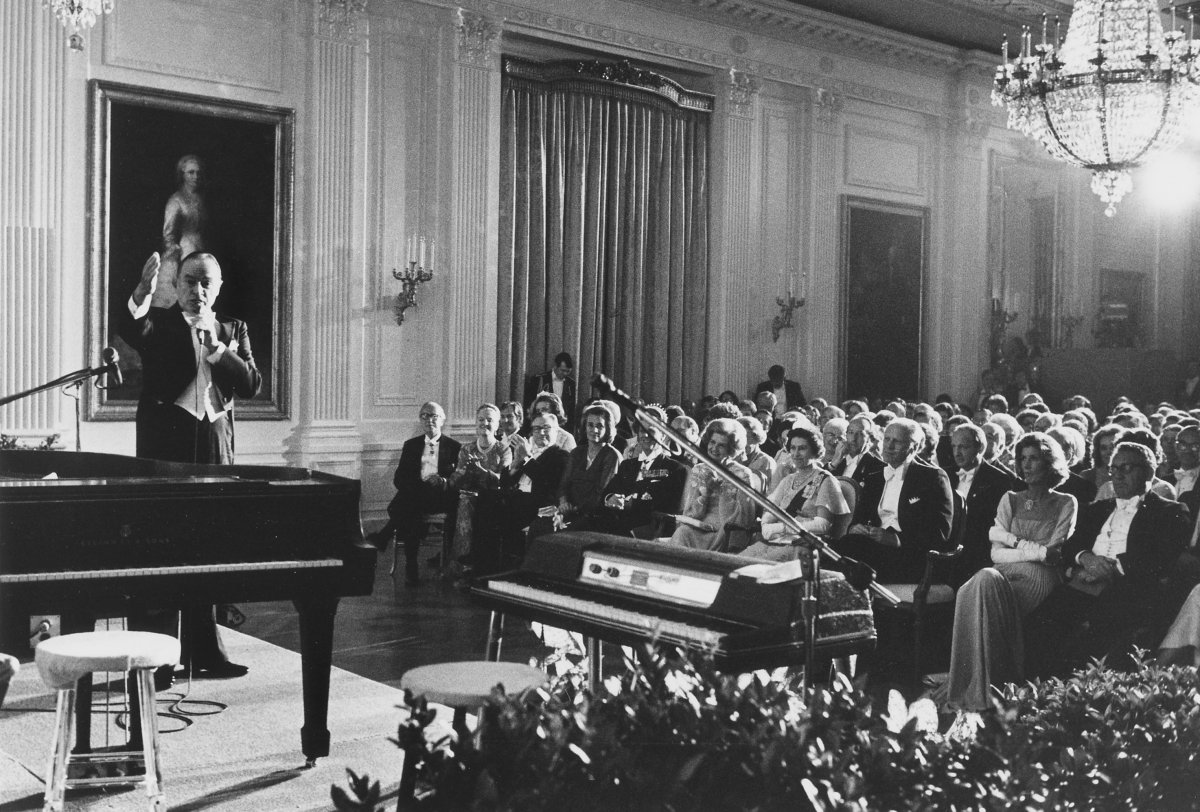
“I’ve never seen an affair as glamorous as this dinner. The diamonds, the jewels,” Hope marveled. “The women look good too.” He also poked a little fun at the royal guests. “I did a show for Prince Philip. There were 25 members of royalty. It looked like a chess game,” he cracked. “In America, when we see a crown we expect to see a margarine commercial.”
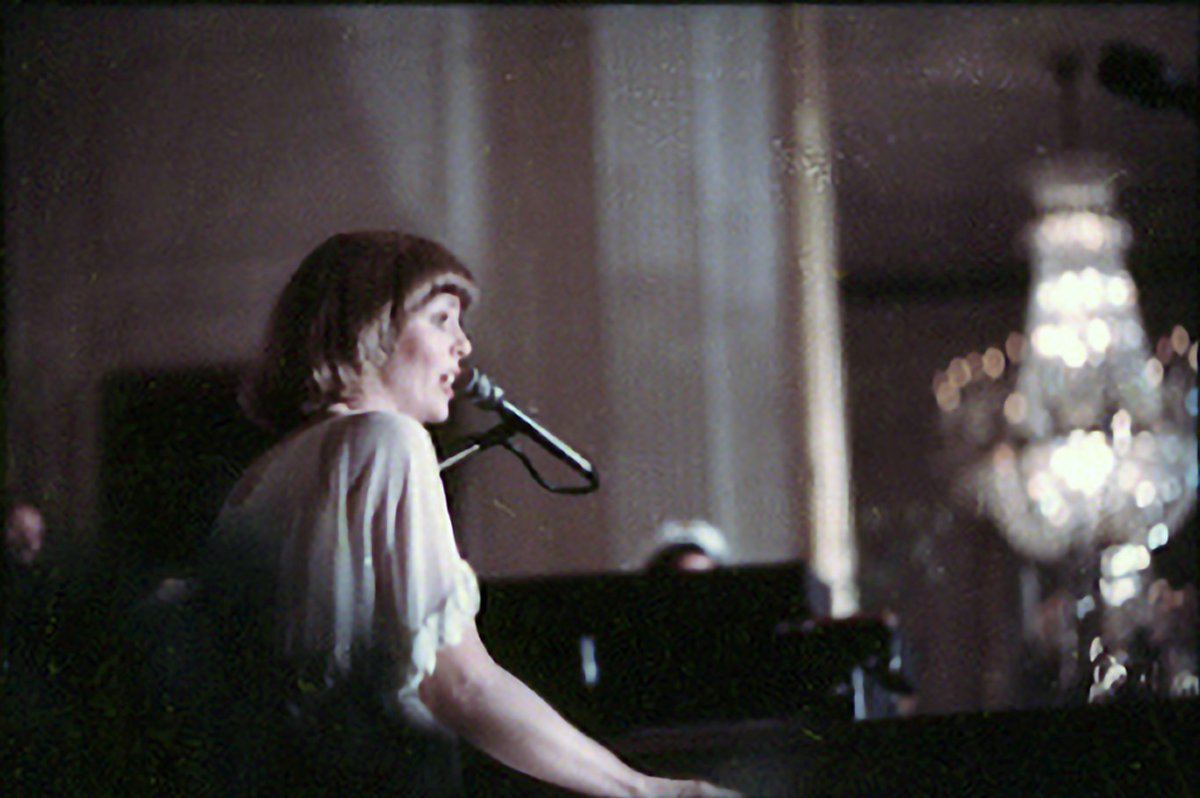
And then, because it was indeed 1976, Hope introduced the musical guests for the evening: Captain & Tennille. They performed four songs, including their biggest hit, “Love Will Keep Us Together,” and their upcoming single, “Muskrat Love.” Toni Tennille later recalled that Henry Kissinger, seated in the front row, “seemed miserable throughout the performance.” He wasn’t the only one. An unnamed “British dignitary” told Sally Quinn of the Washington Post, “I bloody well didn’t come all the way over from England to come to the White House and listen to a couple of muskrats.” Lady Keith, wife of the banker Sir Kenneth Keith, told the press, “It wasn’t a suitable song to sing for the Queen.” Tennille brushed off the criticism, telling Rolling Stone, “They really try to protect her. It must be a drag to be a queen.”
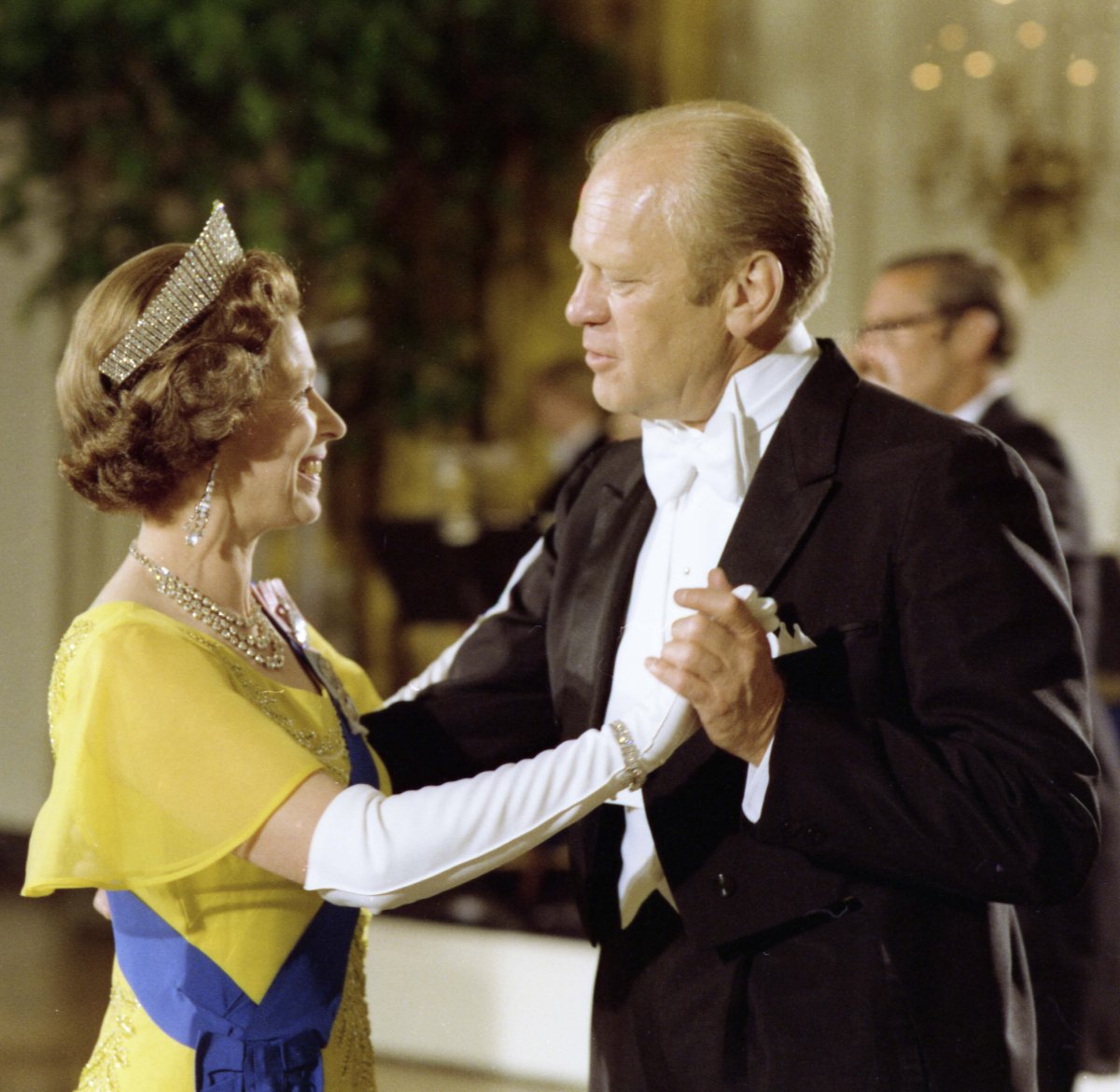
And then, there was dancing in the state dining room. The Queen was photographed dancing with the President. The party went on into the wee hours of the morning, with the Queen retiring to her room at twenty to one, and the Fords dancing on for another hour.
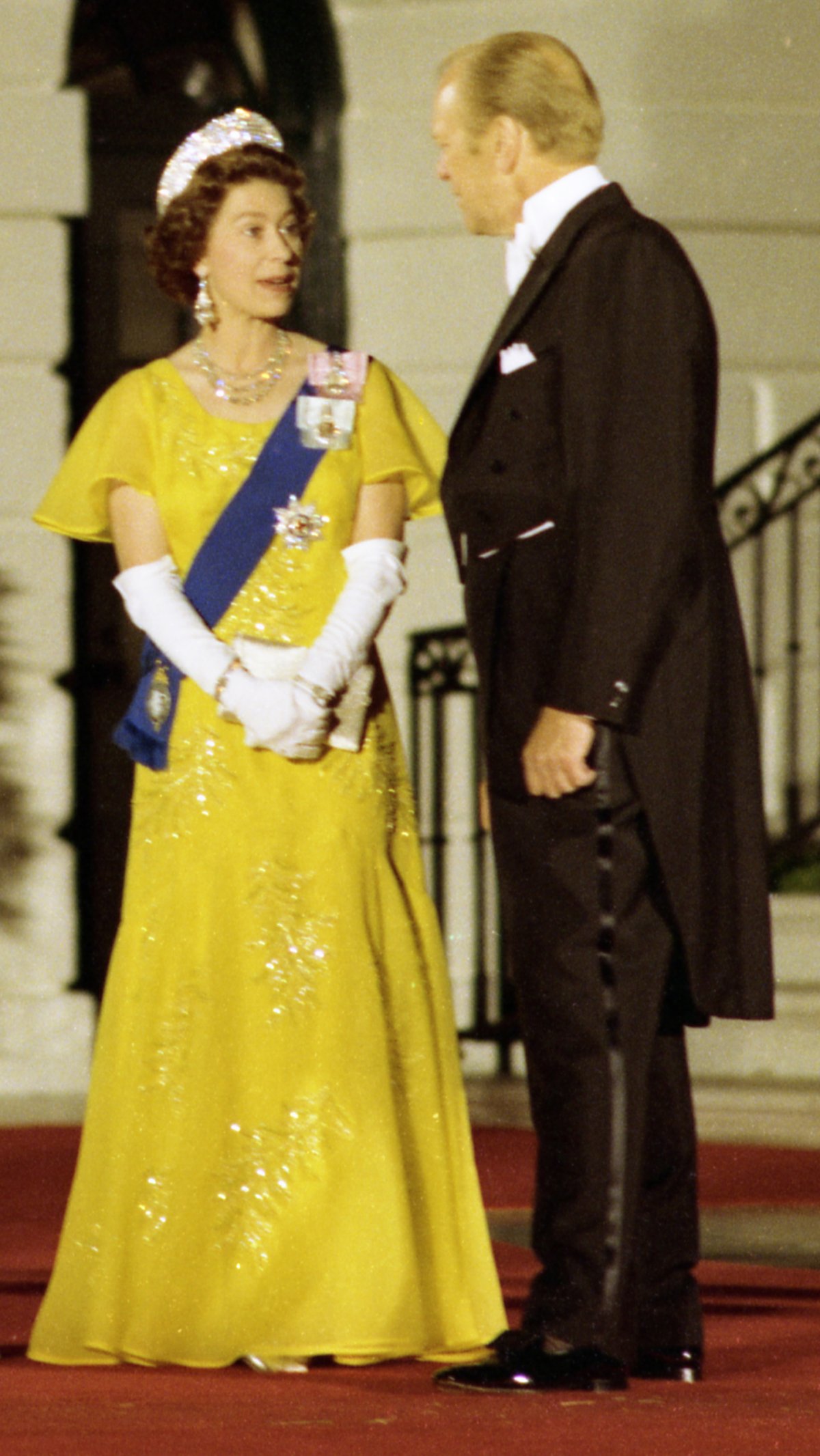
For the dinner, the Queen chose a chiffon evening gown in a shade of yellow described by the press as “lemon.” The gown featured sparkling, leafy embroidery. She also wore the sash and star of the Order of the Garter and the Royal Family Orders of her father and grandfather.
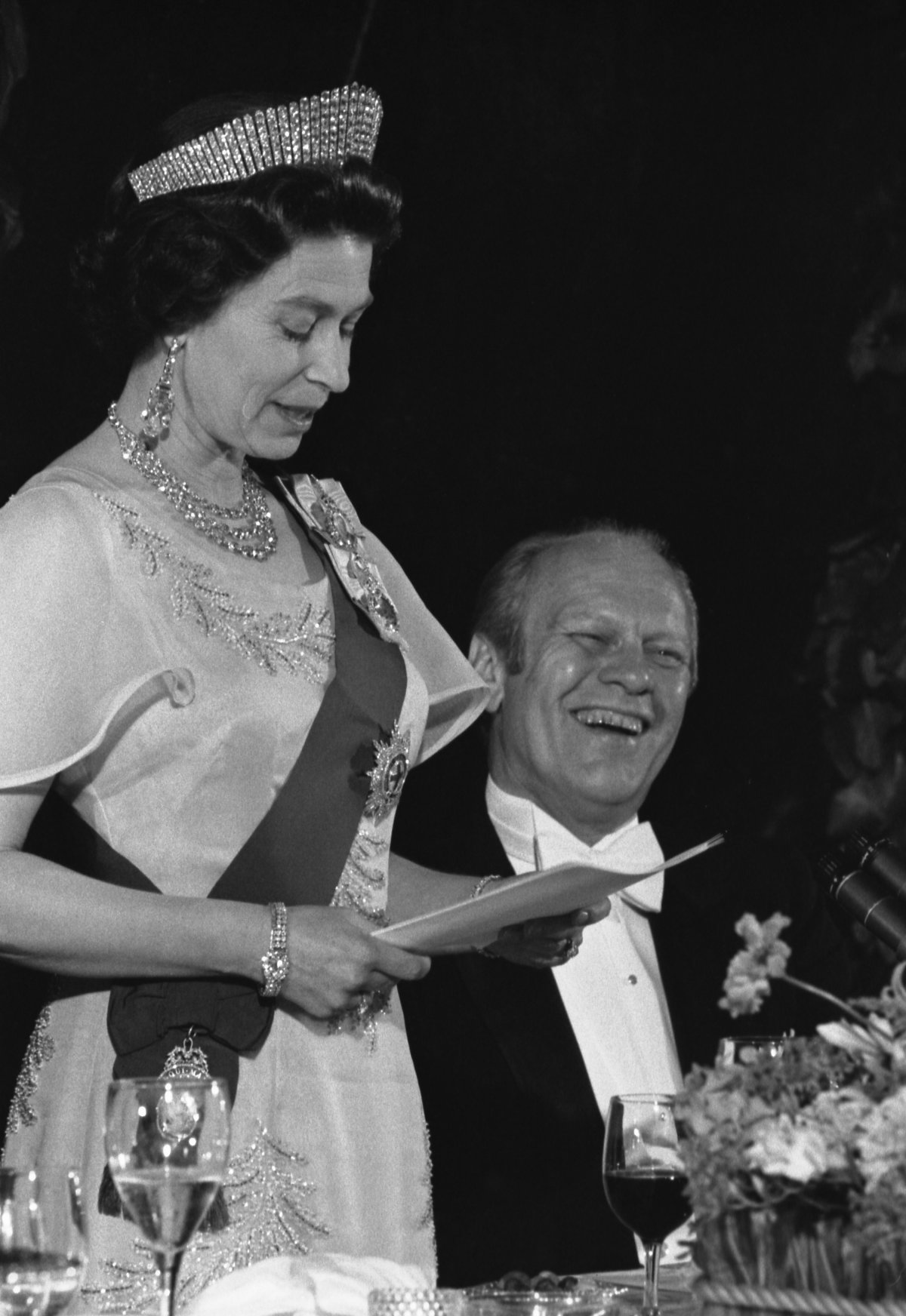
And then there were the jewels. The American press was particularly wowed by the Queen’s diamond tiara. The kokoshnik-style diadem was made in 1888 as a silver wedding anniversary present for Elizabeth II’s great-grandmother, Queen Alexandra. The tiara was modeled after a favorite jewel worn by Alexandra’s sister, Empress Marie Feodorovna of Russia.
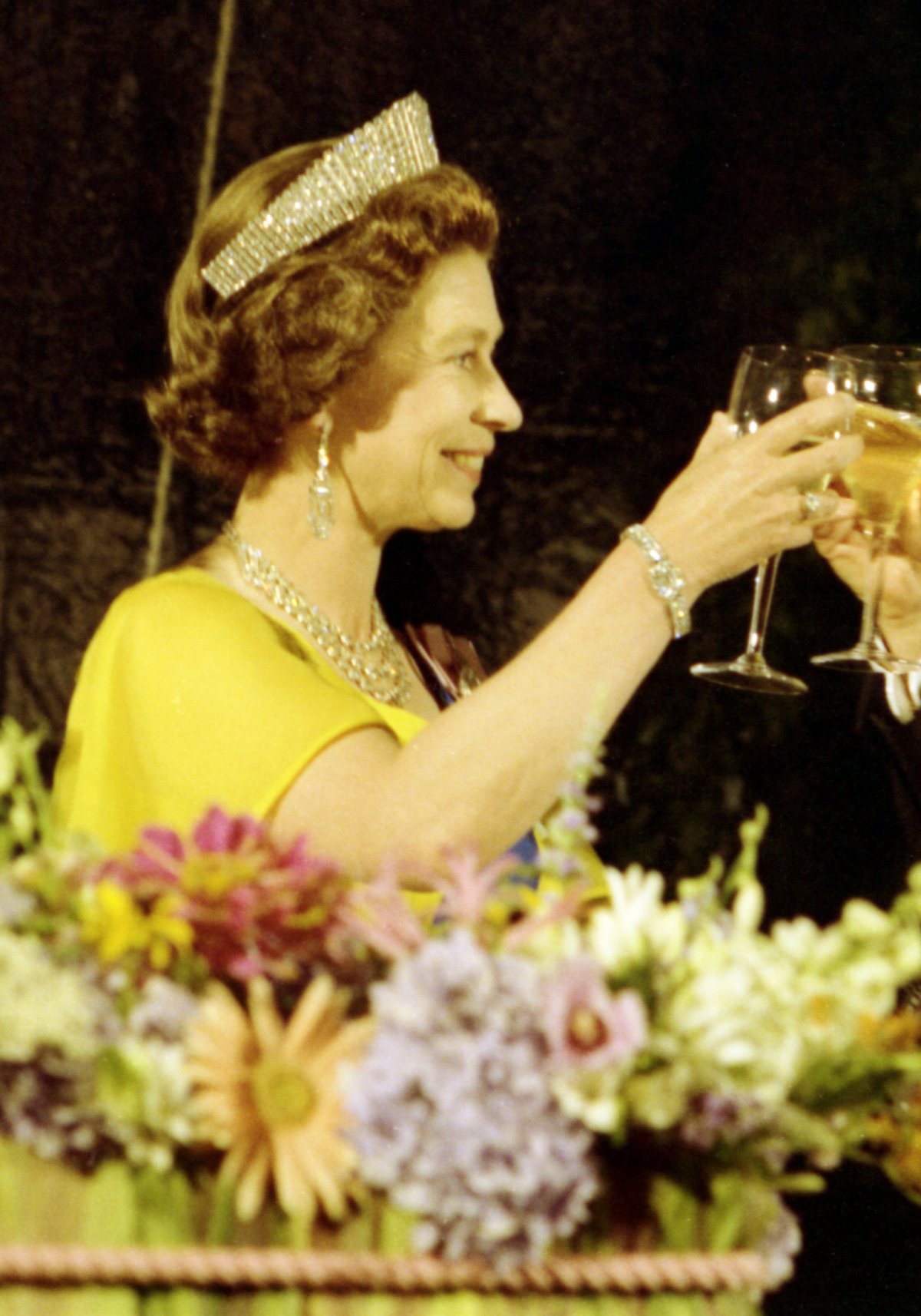
With the tiara, the Queen wore more diamonds from her collection. Her earrings, the Greville Chandeliers, were part of the remarkable 1942 jewelry inheritance received by the Queen Mother. She gave the earrings to Elizabeth as a wedding present in 1947. They were most recently worn in Jordan by the Princess of Wales. The Queen also wore a diamond festoon necklace that was commissioned by her father, King George VI, in 1950. (Kate’s worn that jewel recently too, at the coronation of King Charles III in May.) Her diamond bracelet, which features a distinctive twist in its design, was a gift from George VI in 1949. She finished off the look with a diamond ring on her right hand.
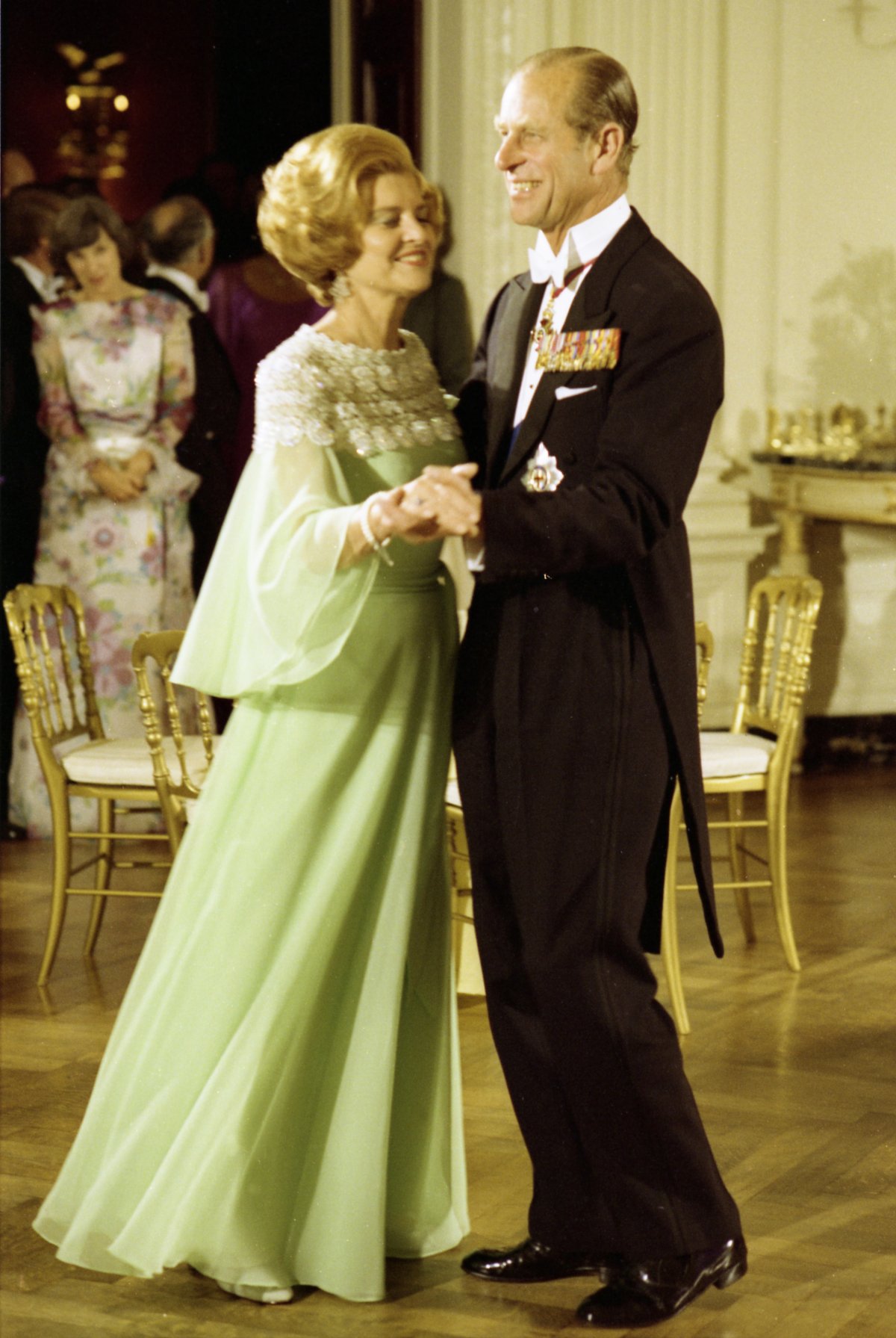
As the Queen and the President glided across the dance floor, Prince Philip gallantly danced with Betty Ford. (Betty loved to dance. She reportedly tried to teach President Ford how to do “The Hustle” at another bicentennial celebration a few weeks after this one.) After the royal guests had gone to bed, reporters spotted Mrs. Ford and Bob Hope showing off their moves as the band played the “Chattanooga Choo-Choo.”
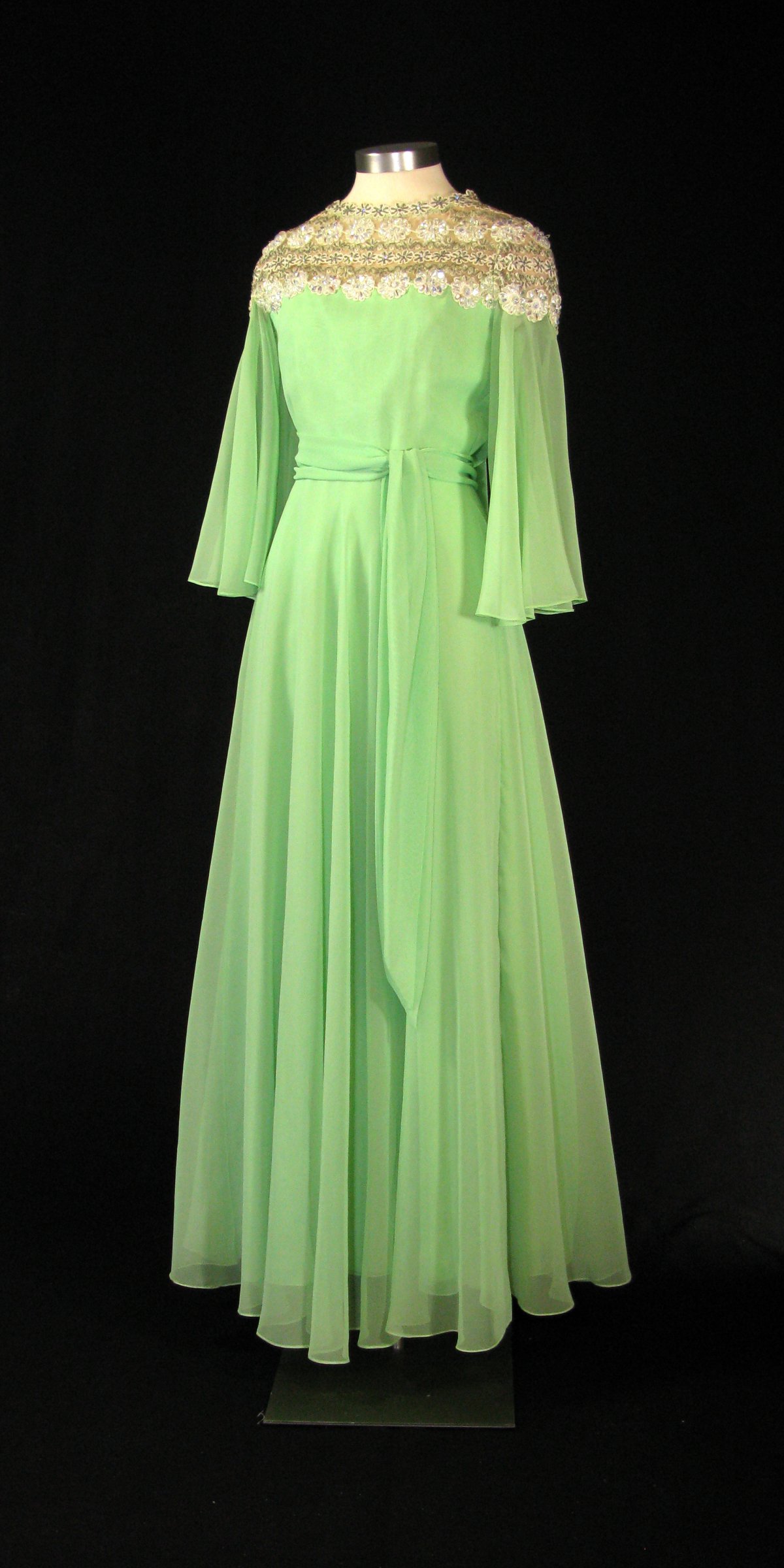
Betty’s gown for the evening was also made of brightly-colored chiffon. (An AP reporter recalled that nearly all of the women in attendance all chose the same summery fabric, wearing “chiffon of every shade.”) Mrs. Ford’s green dress, made by the designer Luis Estevez, coordinated with the garden party theme of the event. The neckline of the gown featured lace and sequined flowers. The dress is now part of the collection at the Gerald R. Ford Presidential Museum in Grand Rapids, Michigan.
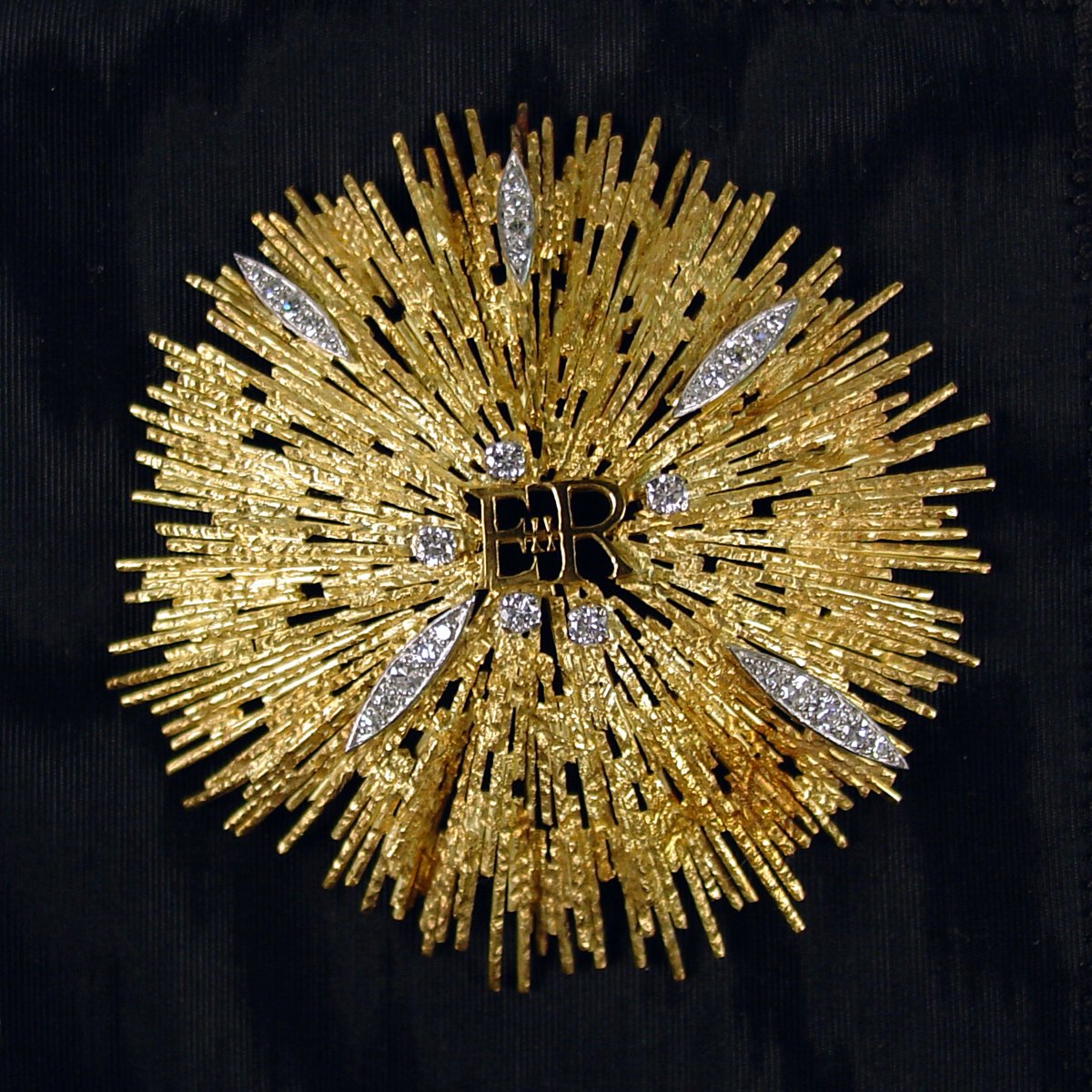
The museum’s collection also includes a very sparkly souvenir from the state visit: a special brooch given by the Queen and the Duke to Mrs. Ford ahead of the state dinner. The royals commissioned the brooch from one of their favorite jewelry designers, Andrew Grima. The starburst jewel is made of gold and set with marquise-cut diamonds, with the Queen’s royal cypher in the center. It’s a perfect piece for a British monarch to give to celebrate the Fourth of July—a bejeweled firework made to celebrate a diplomatic relationship that started with gunpowder and has ultimately endured with sparkling strength.
Leave a Reply
You must be logged in to post a comment.